Jeff (KE9V) posted an interesting commentary on an article by G4ILO about why he’s not excited by software-defined radio. My comments are mostly directed to G4ILO’s original statements.
Before I begin the rant proper though, let me say that if something in ham radio doesn’t appeal to you, you should by no means think that I’m asking you to change your feelings. Everyone is free to explore and experience their hobbies in a way that maximize their own personal enjoyment, without any kind of justification or rationalization required.
But somethings I thought that G4ILO were just a little off target, and as someone who is excited by software-defined radio, I think its good that I air the counterview.
G4ILO begins with:
I say this even though I am a programmer of sorts. I have tried to learn how SDR works with the idea that if I could write my own SDR software it might become an aspect of the hobby I could get interested in. But I can’t. The math is totally beyond me and I just can’t understand how it works at all. The majority of radio amateurs without any knowledge of programming don’t have a chance. Which makes the limit of most people’s technical challenge in an SDR future that of getting somebody else’s SDR software to work. And after a lifetime working with computers frankly I don’t find faffing about with PCs very much fun.
In some sense of course, this is entirely correct. If we compare the number of users of PSK31 to the number of people who understand the modulation technique in sufficient detail to write their own working implementation, I’d say the ratio is likely 1000:1 or 10000:1. But I think it is odd to say that someone “doesn’t have a chance” at understanding software defined radio. I’ve managed to work it out. Most software defined radios are just big down converters, using the principles of phasing that are well exposed in the ARRL handbooks and in books like Experimental Methods in Radio Frequency Design. Once you understand how the digital down conversion works, you can work on designing good low pass filters. Again, the math is a bit heavy, but it isn’t completely impenetrable. Once you have those two bits, making a SDR that receives CW and SSB signals isn’t particularly difficult. The overwhelming majority of hams won’t ever do that, but so what? Isn’t it great that we are able to do so?
G4ILO continues:
A basic understanding of electronics is one of the prerequisites of getting a ham radio license. Although most of us could not design an Elecraft K3 and many of us choose never to design or even build any part of our station, most of us can understand how radio circuits work and quite a few of us can build simple circuits from a schematic. Some of us can even design circuits from scratch – a lot more of us I’d wager than could write their own SDR software.
Again, this may be true, but I also suspect that it is because there isn’t nearly the overlap between ham radio operators and experienced software engineers. The ham radio population as a whole isn’t actually all that computer saavy: there are exceptions naturally, but in general most software written by hams is pretty crufty. Designing feedback amplifiers and impedance matching networks isn’t particularly easier than writing software defined radio software: it’s just different. Everything is hard when you don’t know how it works.
I also expect that while most hams think they understand how lots of things in their radio work, the number who actually do and are able to design bits of their own radio gear effectively is quite low. Guys like SolderSmoke’s Bill Meara who’ve been hams for 20 years are still working to really understand mixers and amplifiers, and benefit greatly from luminaries like Wes, W7ZOI and Rick, KK7B.
The reason I don’t like SDR is that it reduces the majority of us to the role of appliance operators. That may be fine for those who are happy being appliance operators and just want the best technical solution for working weak DX or amassing the most contest points. But for the tinkerers and builders SDR doesn’t leave a lot to experiment with, because most of the interesting stuff happens in software, inside the computer, where we don’t have the tools or the knowledge to tinker with it. If you are using a SoftRock or a top of the line Flex you will be looking at the same software user interface. And I don’t find that a very enthralling prospect.
The majority of amateur radios are already appliance operators. That trend is at least 40 years old, and it shows no sign of slowing. Most of the gear that you can buy now already has a large software component, hidden deep inside the unit where it is not only difficult but literally impossible for you to examine it. The glory of things like the Softrock is that even if you have a modest understanding of electronics, you can figure out what how it works, and can use your ordinary every day PC to process the signals from it. If you only use Rocky, well, then you’ve built a $15 receiver that can do AM, FM, SSB and CW with varying filters. If you examine the circuit, you”ll learn how Tayloe detectors work, and why they are a good idea. If you spend a bit more of time, you might begin to understand how sampling works, what the Nyquist limit is about, and how you can construct good heterodyne filters in software.
And frankly, the idea that software defined radios don’t leave much room for experimentation makes me blow milk out my nose. If it isn’t the kind of experimentation that you are personally interested in, so be it, but there is lots to do. I’ve been working on my own code for detecting QRSS beacon activity. I’ve got a perverse interest in modes like Hellschrieber, and thought that making a compact, self-contained rig to do Hellschrieber would be a fun thing to do, and could be powered by something as cheap and inexpensive as a dsPIC. Even if you just like RTTY, you could probably make a small self-contained rig that could decode multiple RTTY signals simultaneously. Or, you can develop (or someone can) really nice PC interfaces, like the one from sdr-radio.com. I’d like to see a SDR kit or design that includes the analog capture as well (we should stop relying on sound cards, which have characteristics which aren’t always in tune with our needs) so we can sever the ties with our laptops. I’d like to see software defined radios with wide bandwidth available at VHF+ (but perhaps cheaper than the ones available from ettus.com).
Software defined radios aren’t a panacea. They don’t solve all possible problems, or even any given problem in the best possible way. They do however give hams a set of tools and techniques that are versatile and exciting, and I welcome their addition to ham radio.
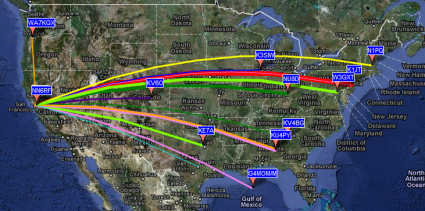
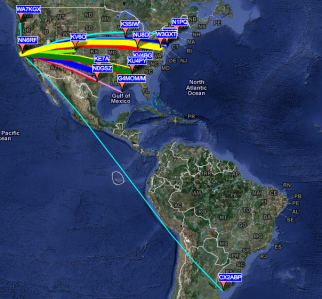
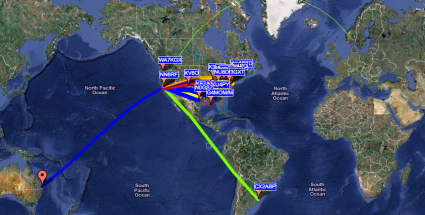
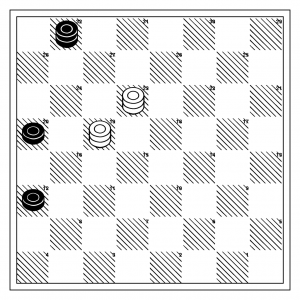
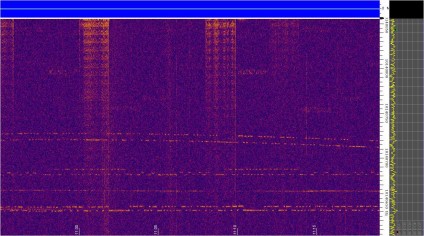
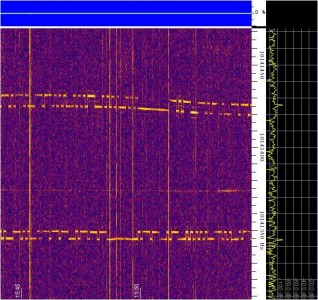
I recall burning three or four weeks of a sabbatical getting Saccade.com on the air with Wordpress. So much tweaking…